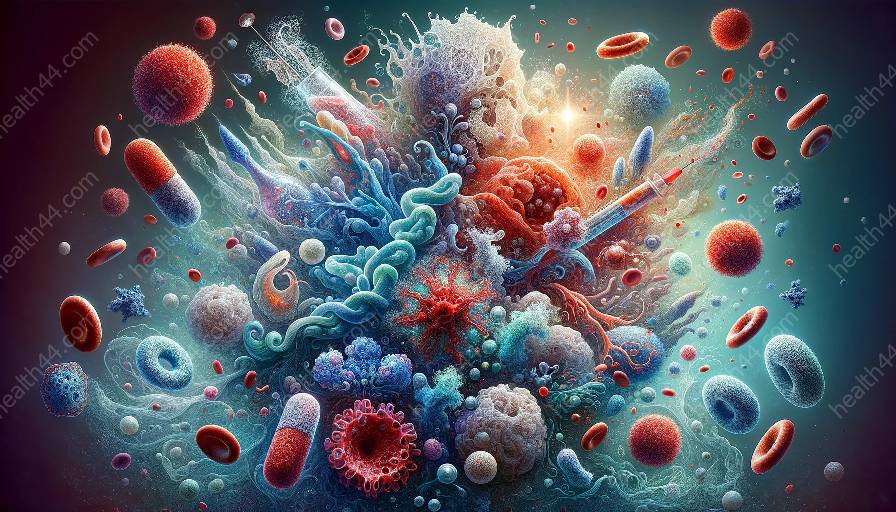Leukocyte extravasation, also known as leukocyte migration or diapedesis, is a crucial process in the immune system that plays a significant role in inflammation and immune response. This process is vital for the body's defense against pathogens and maintenance of tissue homeostasis.
Process of Leukocyte Extravasation
Leukocyte extravasation involves a series of complex and coordinated steps, including:
- Margination and Rolling: During inflammation, the blood vessels dilate, causing a decrease in blood flow velocity. As a result, leukocytes, especially neutrophils, move to the periphery of the vessel and begin to roll along its wall.
- Activation and Adhesion: Chemokines and other inflammatory mediators released at the site of inflammation stimulate the endothelial cells to express adhesion molecules, such as selectins and integrins. This leads to the firm adhesion of the rolling leukocytes to the endothelial cells.
- Transmigration: The adherent leukocytes then undergo diapedesis, where they migrate through the endothelial cells and basement membrane to reach the extravascular tissue.
- Migration to the Inflammatory Site: Once in the tissue, the leukocytes move toward the chemotactic signals released by the site of injury or infection.
Significance in Inflammation and Immune Response
Leukocyte extravasation is critical in the context of inflammation and immune response for several reasons:
- Pathogen Clearance: By migrating to the site of infection, leukocytes can directly combat pathogens and limit their spread within the body.
- Tissue Repair and Regeneration: Leukocytes play roles in tissue repair, phagocytosis of cellular debris, and the production of growth factors that aid in tissue regeneration.
- Regulation of Inflammation: Leukocytes release cytokines and other signaling molecules that can modulate the inflammatory response and contribute to the resolution of inflammation.
- Immune Surveillance: The extravasation of leukocytes allows for immune surveillance, enabling the identification and elimination of abnormal or infected cells.
- Immunopathology: Dysfunction in leukocyte extravasation can lead to immunopathological conditions, such as chronic inflammation, autoimmune disorders, and inflammatory diseases.
Role in Immunopathology and Immunology
Leukocyte extravasation is closely related to immunopathology and immunology. The dysregulation of this process can contribute to the development of various immunopathological conditions:
- Autoimmune Diseases: In conditions like rheumatoid arthritis and multiple sclerosis, abnormal leukocyte migration and tissue infiltration lead to chronic inflammation and tissue damage.
- Allergic Reactions: Leukocyte extravasation plays a role in the pathogenesis of allergic conditions, where immune cells infiltrate tissues and promote allergic inflammation.
- Infectious Diseases: The ability of leukocytes to migrate to sites of infection is crucial for the body's defense against invading pathogens; however, excessive or dysregulated migration can lead to tissue damage and immunopathology.
- Cancer Immunology: Leukocyte extravasation is relevant in cancer immunology, as infiltrating immune cells can exert both pro-tumorigenic and anti-tumorigenic effects in the tumor microenvironment.
- Therapeutic Target: Understanding the mechanisms of leukocyte extravasation is important for the development of therapeutic strategies targeting immunopathological conditions and inflammatory diseases.
In summary, leukocyte extravasation is a crucial process in the immune system, with significant implications for inflammation, immune response, and immunopathology. Understanding the mechanics and significance of this process is essential for advancing our knowledge of immunology and developing effective strategies for managing immunopathological conditions.


